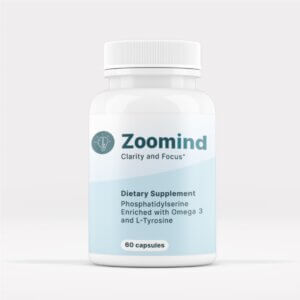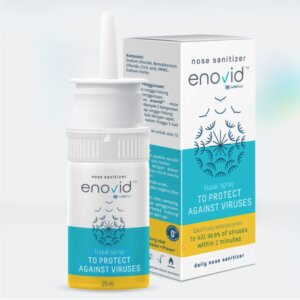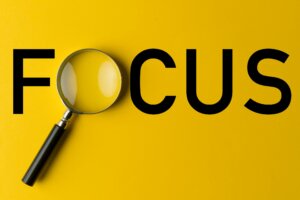Plenty of folks would love to find a “cure” for Attention-deficit/Hyperactivity Disorder (ADHD). Doctors, therapists, pharmacists, and other experts get bombarded with questions about whether some special diet or magical pill can ‘cure ADHD’. The reality is that ADHD doesn’t have a straightforward fix, but there are ways to make living with it more manageable.
So What is a ‘Cure’ Anyway?
There certainly are diseases that can be cured, like tuberculosis or malaria. With the right medicine, they’re gone for good! Then there are conditions, like high blood pressure, that can’t be cured but can be managed. People can still live healthy lives by taking their medications every day.
The list of things that can’t be cured is longer than those that can, but that doesn’t mean we’re helpless. A good care plan can keep people with ADHD healthy and thriving.
Why Can’t We Cure ADHD?
ADHD is a bit tricky. It’s not like a typical sickness where you take medicine, and it goes away. The characteristics and causes of ADHD are complex and not entirely understood. However, what’s certain is that there’s no magical fix for it. That’s why it’s essential to understand what ADHD is about, how it affects those with it, and what each treatment aims to do. Whether it’s medication, therapy, or dietary changes, the goal is not to “cure” but to help individuals with ADHD live fulfilling lives.
What is ADHD?
Attention-Deficit/Hyperactivity Disorder (ADHD) is not about being lazy or having a different personality – it’s a medical condition that affects how people pay attention, control impulses, or handle restlessness. It isn’t about personality or intelligence but rather a unique way a person’s brain functions. It can affect people of all ages, including children and adults.
So, What Does ADHD Look Like?
People with ADHD might struggle to focus and seem restless or impulsive. These aren’t bad habits but symptoms of how their brain works. Here’s what you might notice:
Symptoms of Inattention:
- Mistakes from not paying enough attention
- Need help to keep focused on something
- Seeming to ignore people talking directly to them
- Need help organizing thoughts or finishing tasks
- Avoiding challenging mental activities
- Being forgetful or easily distracted
Symptoms of Hyperactivity/Impulsivity:
- Constantly fidgeting or moving around
- Acting out when expected to be quietly seated
- Running or climbing at inappropriate times
- Struggling to stay quiet or calm
- Talking a lot or interrupting others
- Answering too quickly before a question is finished
These aren’t signs of rudeness or laziness but clues about how the ADHD brain is wired and working. It’s real, and understanding it helps us support people with ADHD better.
Causes of ADHD
ADHD is a puzzle where many pieces come together to create the complete picture. That’s an important thing to know up-front. ADHD doesn’t have one cause that scientists can point to or doctors can try to correct. For most people with ADHD, multiple factors contribute to their condition.
Here’s what is known about the factors that might contribute to ADHD:
- Genetics: If someone in your family has ADHD, you might have it too.
- Early Development: Things like premature birth or exposure to certain substances before birth might contribute.
- Head Injuries: Though rare, a knock on the head can be a piece of the puzzle.
- Brain Chemistry: Sometimes, brain chemicals like dopamine and norepinephrine are out of balance, affecting attention and impulse control. These chemicals are involved in how the brain sends messages.
- Environment: At home and school, toxins, family life, and social interactions all play a part.
- Love and Care: Family environment, parenting styles, and early childhood experiences may influence the risk of ADHD.
It’s complicated, but the more we know, the better people with ADHD can be helped. Understanding ADHD’s causes is like untangling a complex web. It’s not one single strand, but many factors that are coming together. Knowing these pieces helps medical professionals, parents, and educators create the proper support structure for those with ADHD.
Diving into the Brain’s Chemistry
There is one process that lies at the very root of ADHD, and that is how the brain functions. Ultimately, the typical behaviors shown by people with ADHD come from the instructions that the brain issues. These “command and control” messages manage thoughts and movements. When they appear as unexpected or unwanted results, something goes wrong in the messaging system – like trying to listen to a TV channel broadcasting from too far away, and you only get parts of the signal.
The whole brain messaging system involves chemicals called neurotransmitters. In the case of ADHD, if specific neurotransmitters like dopamine and norepinephrine are out of balance, this can affect attention and impulse control.
- Dopamine is often referred to as the “feel-good” neurotransmitter. It is essential in mood regulation, motivation, and the brain’s reward system. Its importance for people with ADHD is that it is involved in several critical functions like attention, focus, reward, and motivation. When dopamine is in short supply, it can show up as impulsivity, inattention, lack of motivation, reduced interest in daily activities, and decreased sense of pleasure – all typical symptoms of ADHD.
- Norepinephrine is also involved in attention and response actions. It’s the key to the body’s “fight or flight” response to stress. A norepinephrine shortage might lead to fatigue, a general sense of tiredness and lack of energy, and difficulty concentrating on tasks.
If there’s no way to Cure ADHD, how can it be Treated?
In ADHD, many causative factors are too far in the past to be corrected by any treatment. Genetics, head injuries, pre-birth events, and other causes we listed are no longer accessible for repair. What can be done instead of trying to cure ADHD is to try and fix the effects, and while most doctors will agree that there’s no way to cure ADHD, it’s still possible to help people manage their symptoms and live remarkable lives.
Most treatments aim to achieve the same result: to stabilize the brain’s chemistry, especially with controlling neurotransmitter levels.
Medication:
- Stimulants: These are prescribed most of the time and help with attention.
- Antidepressants and Sedatives: These can reduce hyperactive behavior.
- Non-Stimulant Drugs: These might be used if stimulants aren’t suitable.
- Combination Therapy: Sometimes, different medications are combined to treat symptoms.
Diet:
The human brain is nearly 60 percent fat, but this can not be synthesized by the body and must be obtained from dietary sources. So, eating the right things can help! Substances like omega-3 fatty acids, phosphatidylserine, and L-tyrosine are essential dietary components since the body cannot manufacture them on its own, and without them, the production of dopamine and norepinephrine will drop.
Omega-3 fatty acids can come from the intake of omega-3-rich foods like oily fish. However, it’s difficult in most societies to get a regular and affordable supply, so dietary supplements have become very popular.
Our proprietary specialized ADHD supplement Zoomind combines phosphatidylserine supplemented with omega-3 fatty acids eicosapentaenoic acid (EPA), docosahexaenoic acid (DHA), and L-tyrosine. The primary function of each of these is:
- Omega-3 fatty acids that contain EPA and DHA, which are both critical for optimal brain health
- Eicosapentaenoic acid (EPA) controls inflammation and how well the brain develops and functions.
- Docosahexaenoic acid (DHA) is the most abundant fatty acid in the brain and is especially important in nerve cell structure and function. It is needed for optimum visual acuity, and extra DHA improves mental development. Adequate levels of DHA make it easier, quicker, and more effective for nerve cells to communicate.
- Phosphatidylserine (PS) is vital for brain function and is produced in a healthy brain as long as the components are available. It is built up structurally with fatty acids, so if they are in short supply, levels of PS will drop. In some diseases and conditions, like ADHD, Alzheimer’s, or aging, production slows down. When it’s in good supply, it stimulates the release of dopamine, increases the production of another chemical necessary for learning and memory, helps the brain to metabolize sugar, and lowers the levels of stress hormones. Dietary supplementation with phosphatidylserine can have a substantial effect on boosting brain efficiency.
- L-tyrosine is a basic chemical building block (amino acid) with many functions. In the case of its value for people with ADHD, who may have trouble thinking clearly, remembering information, and paying attention when in a stressful situation, it can help improve their mental performance. Because ADHD can cause behaviors that are different from what’s typical or expected, it often raises levels of stress, and this is where L-tyrosine comes to the rescue. L-tyrosine also helps communications between nerve cells.
In Conclusion
There’s no one way to cure ADHD, because it’s multifaceted, and so are the ways it can be treated. It’s vital to remember that multiple studies have shown that children and young adults with ADHD can benefit significantly by boosting their body’s input of suitable omega-3 fatty acids and other chemicals needed to maintain the right neurotransmitters. Zoomind is a simple treatment that can work on its own and with other prescribed medications. It is safe, easy to take, and comprises natural ingredients with no side effects.









